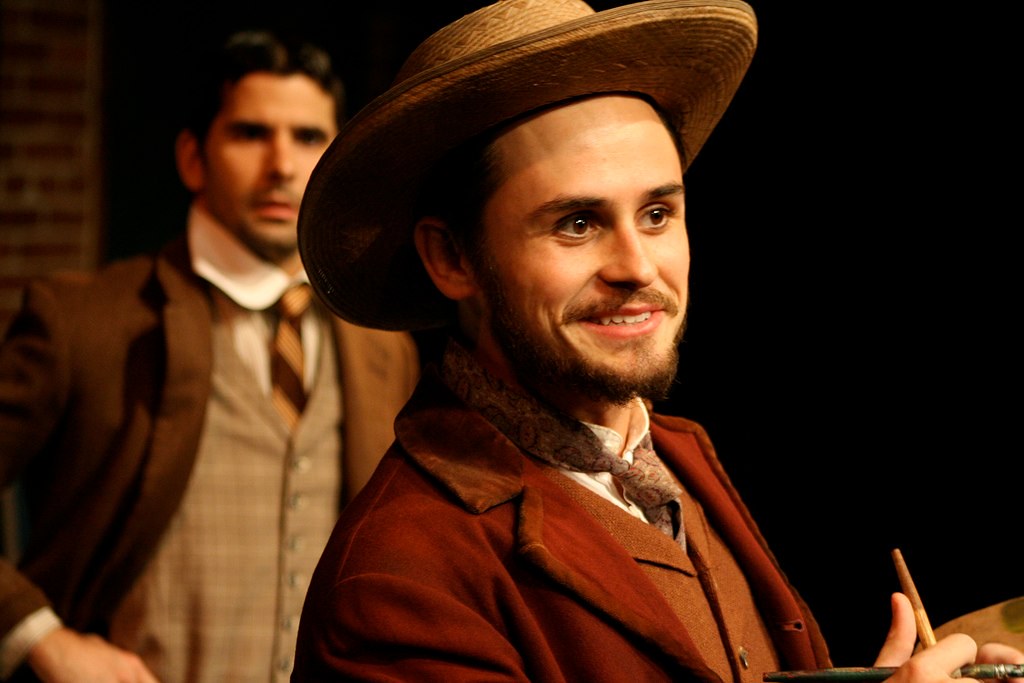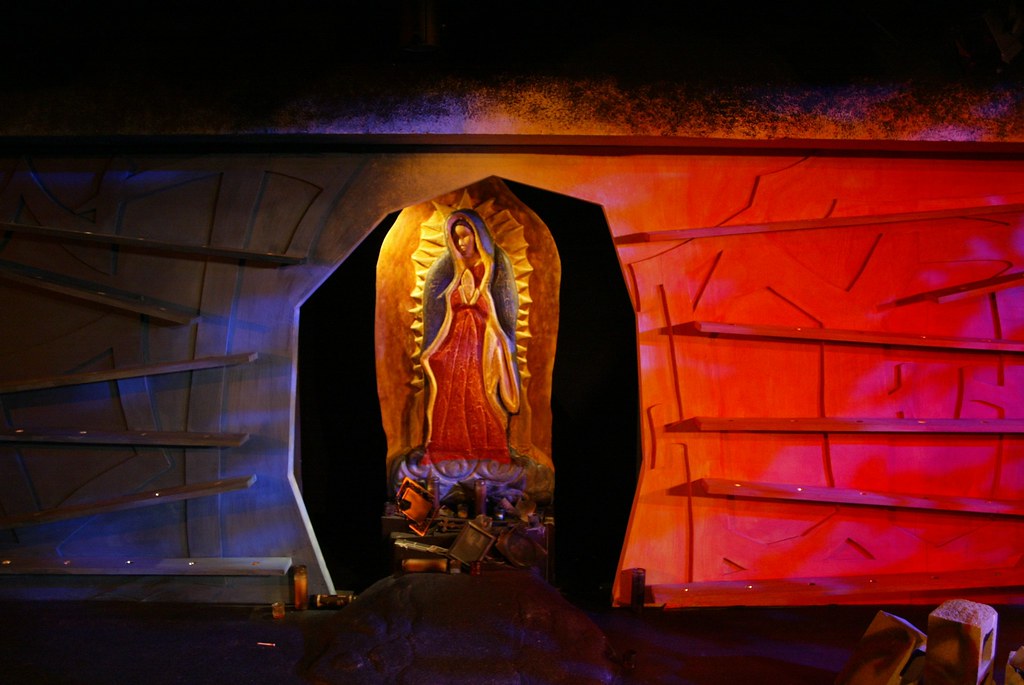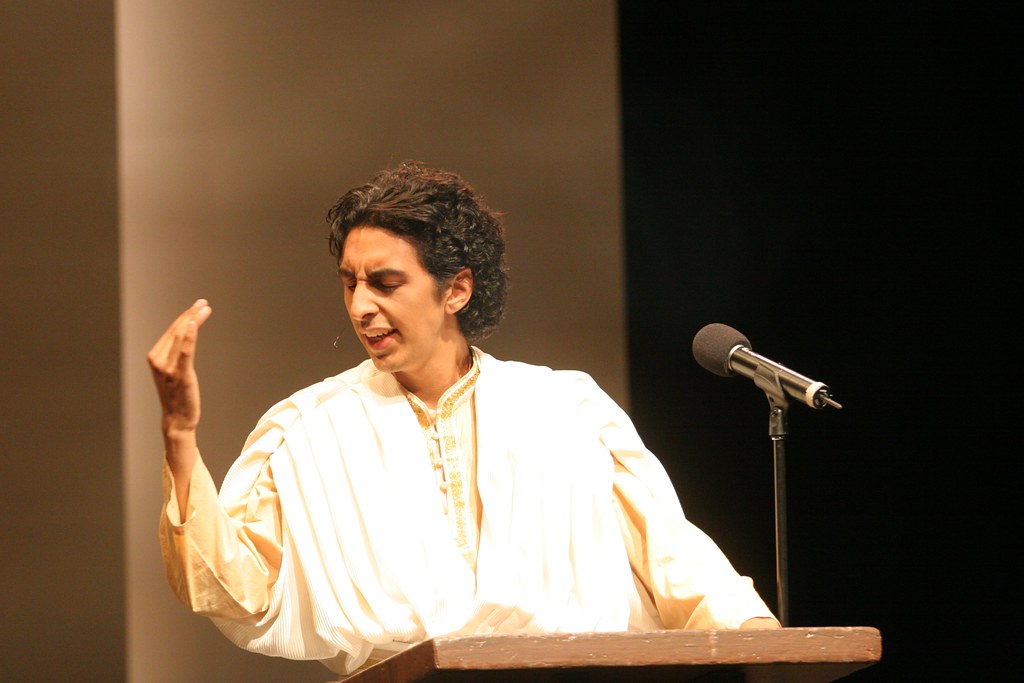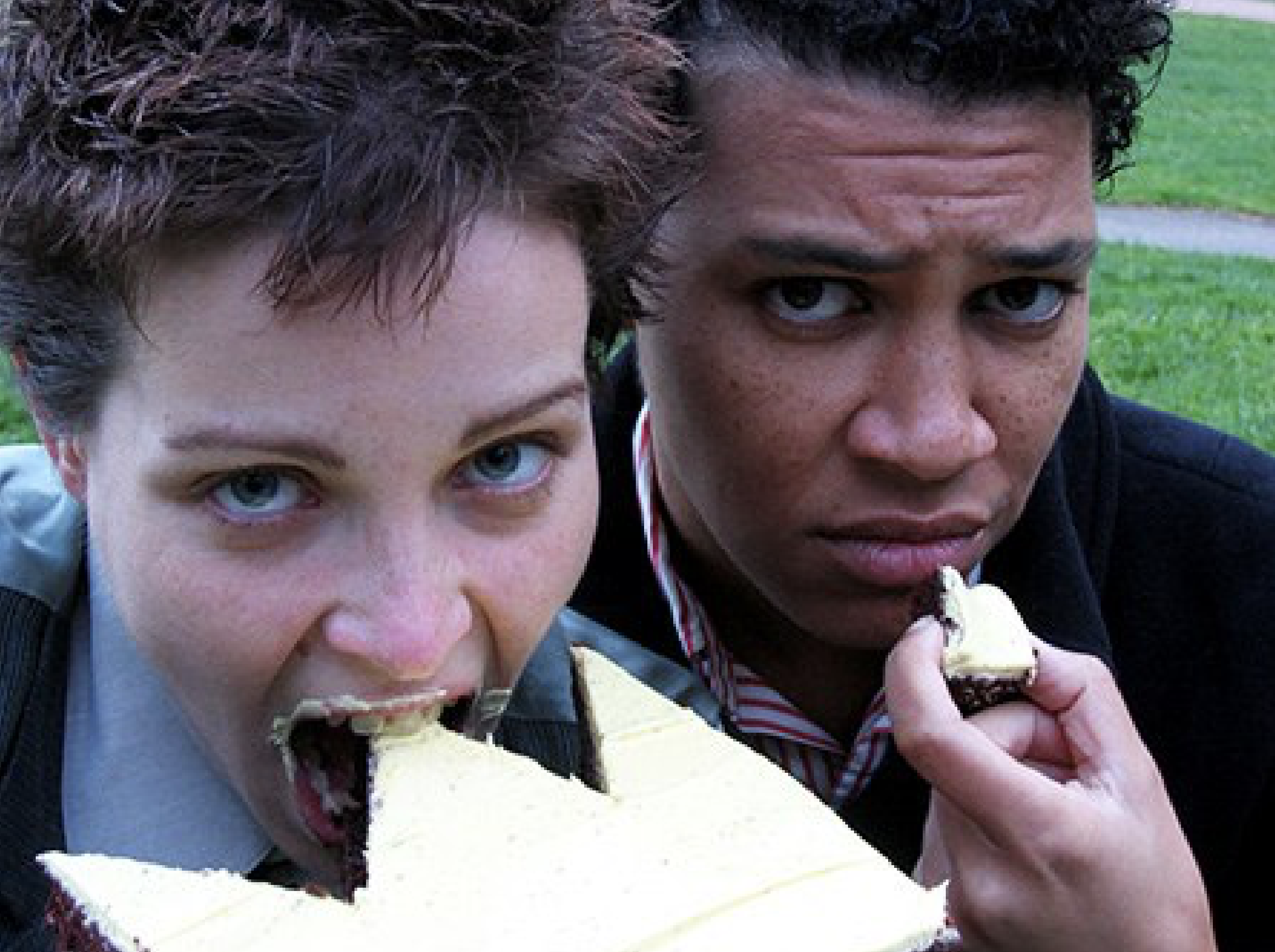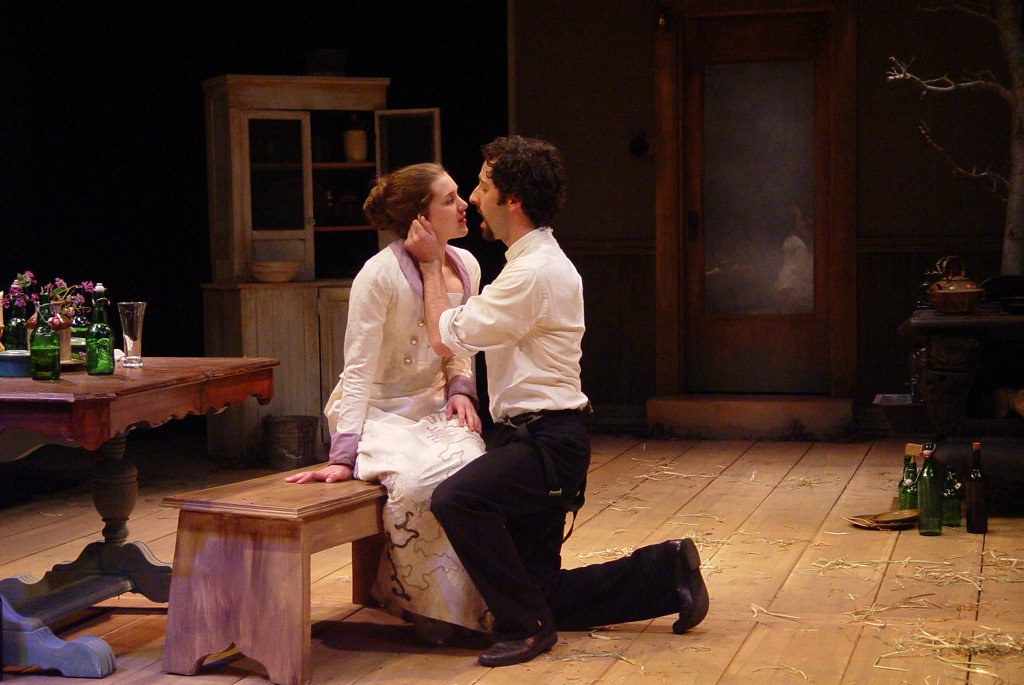Written by Luis Alfaro
Directed by Susannah Martin
Photos by Steve Decker
Presented by Sacramento Theatre Company
March 28 – May 20, 2007
Press
SACRAMENTO BEE “The production maintains a fine balance of tones and honest emotional integrity under Susannah’s Martin’s sure measured direction.” – Marcus Crowder
SACRAMENTO NEWS & REVIEWS “5 Stars, Shockingly Good..Director Susannah Martin, a recent MFA from UC Davis, balances the show’s many diverse elements and changing moods adroitly, and brings tension to a brutal ending that’s foretold.” – Jeff Hudson
Director’s Note
Program note written in collaboration with dramaturge Jon Rossini.
Electricidad, “a Chicano take on the tragedy of Electra,” combines elements from the Aeschylean, Sophoclean and Euripidean dramas of Electra with additions and substitutions that reflect the specific conditions of East Los Angeles Chicano culture. In the story of Electra, Clytemnestra, wife to Agamemnon, has killed her husband after he returns from a 10-year absence while fighting the Trojan War. Electra, who becomes a slave to her mother and her mother’s lover, Aegisthus, waits many years for her brother, Orestes, to return and avenge her father’s death. When this act of matricide finally occurs, Orestes is driven mad. He is only freed from this madness when the gods determine that the father’s divine right outweighs that of the mother—a patriarchal and not a matriarchal culture must dominate.
The political and cultural structure of Alfaro’s setting, an East Los Angeles barrio, is organized around cholo culture, a specific articulation of Chicano urban consciousness. Often associated with gang identification, the word cholo also reflects a larger cultural history of marginalization that harkens back to the Pachuco and the Bandido. The Pachuco, explored in Luis Valdez’s seminal play Zoot Suit and Octavio Paz’s Labyrinth of Solitude, is an identity forged in the spaces between US and Mexican culture. The Bandido, or bandit, is exemplified by the romanticized Joaquin Murrieta or Tiburcio Vásquez.
Their actions, and the stories told about them, contested the incursions of U.S. cultures into previously Mexican spaces. All three of these figures have an ambivalent relationship to the communities from which they come. They served and serve as a form of political resistance that questions corrupt and abusive power; they manifest cultures and identities that provide alternatives to mainstream representation; and they often practice a range of extra-legal and even violently destructive activities. Alfaro’s account of cholo culture ties it into Aztec mythology, giving it a long cultural history that parallels the long mythic history explored in Greek tragedy. The complexity and richness of this history and his characters allows Alfaro to provide the audience a vision of the cholo that does not immediately reduce cholo culture to media stereotypes of violent gang behavior.
Unlike the Clytemnestra of the Greek tragedies, Alfaro’s Clemencia attempts to usher in a new world, a new possibility of living that moves away from the old cycles of violence and from the male dominance that accompanies that violence. Also, unlike the Greek versions, Clemencia has no lover; she is trying to make it on her own, putting into question the morality of a murder that in other versions of the story is clearly an evil act. Two characters new in Alfaro’s version, Abuela and Ifigenia, offset the supposed villainy of Clemencia. Abuela, the grandmother, offers a useful counter to Electricidad’s assumption that life was better in the past, illustrating not only the matrilineal responsibility for child rearing, but also a long history of the social marginalization of Chicanos that results in a “cholo culture.” The sister, Ifigenia, already dead in the Greek versions, is here born again to offer Electricidad an alternative to the path she has chosen for herself. Ifigenia is not presented as a model of reform, but as a complex character groping for another way, exploring the possibilities of spirituality and forgiveness.
Orestes, a young man with a poet’s heart, is forced to harden himself in order to take his father’s place whether he wants to or not. Alfaro’s presentation of his preparation to take over his father’s “kingdom” questions the limits of this violent form of masculinity by demonstrating Orestes’ own concerns about submitting to a male role forged in violence. The chorus, which represents the polis, or society, in Greek theater, here consists of Las Vecinas, three neighborhood women who are constantly attempting to clean up the barrio while they share tales of their place in the city. These chismosas, or gossips, provide a sense of comic relief that reflects the everyday survival strategies of women protecting their neighborhood. At the same time, as caretakers of their community’s history, they clearly articulate a fundamentally ambivalent relationship to cholo culture.
Alfaro’s careful attention to the humanity and complexity of his characters effectively combines the issues of fate in Greek culture with the cycles of violence attached to urban gang culture. It forces the audience to examine the choices made by a community pushed to the edges of society and marginalized by explicit and subtler forms of racism. By setting the play within a Chicano cosmos Alfaro not only captures the humor and innovation that enable Chicano culture to survive, he offers the possibility of an intra-ethnic critique—an internal questioning of the values of that culture. These questions are the same large questions that Athenian audiences were asking in the face of the original tragedy: What choices are possible when fate appears inescapable? What notions of honor and responsibility are worth preserving? What is gained and lost by holding onto values that are themselves potentially problematic? How is it possible to make a good, ethical choice in a world in which cyclical violence becomes a rational answer? What sacrifices can and should be made in order to change the world? And finally, in this urban space charged by the electricity of the protagonist, shaped by the deprivations of discrimination and limited resources, how can one move beyond violence and revenge?
Cast
Electricidad / Saffron Henke*
La Cuca / Therese Llanes
Ifigenia / Katherine C. Miller
Orestes / Gabriel Montoya
Clemencia / Elisabeth Nunziato*
Nino / Roscoe
La Connie / Nancy Silva
Abuela / Janis Stevens*
La Carmen / Irene Velasquez
*Member of AEA
Crew
Artistic Director / Peggy Shannon
Managing Director / Kendra Lewis
Assistant Stage Manager / Susie Evon
Costume Design / Rebecca Redmond
Dramaturge / Jon Rossini
Fight Director / Melanie Julian
Production Manager / Betsy M. Martin
Properties Manager / Jenifer Schlosser
Set Design / Steve Decker
Stage Manager / Drea Konomos*
Technical Director + Lighting Design / EJ Reinagel
